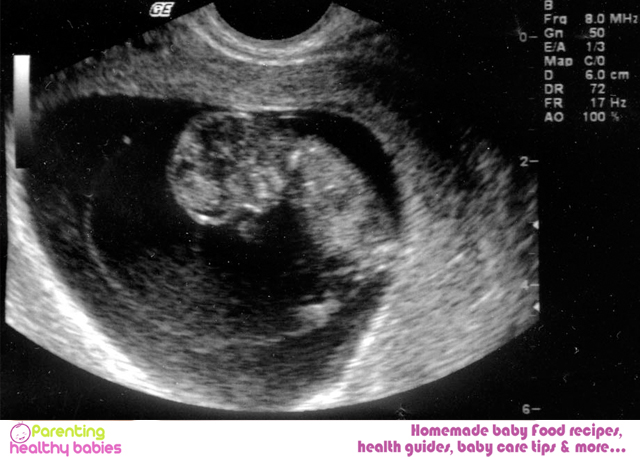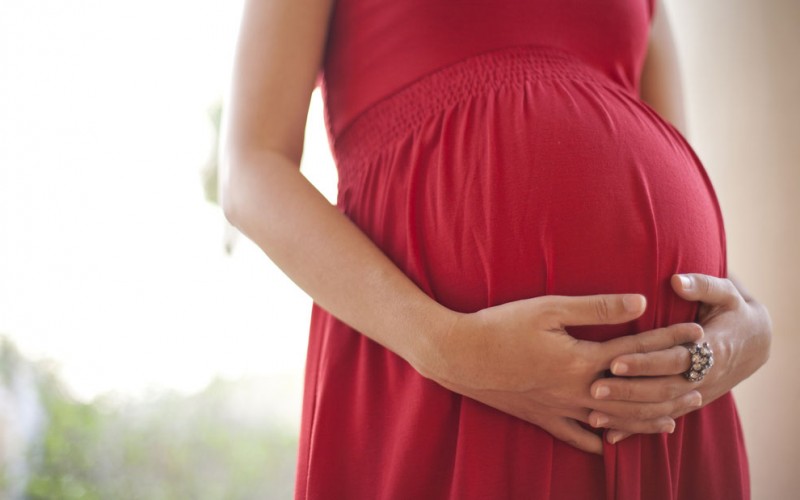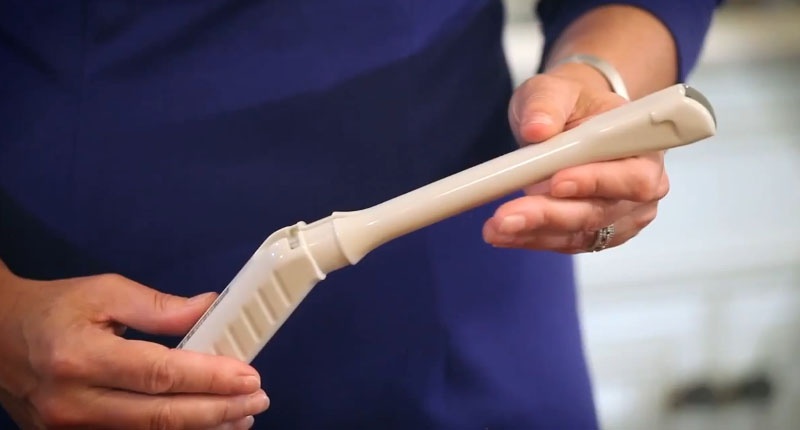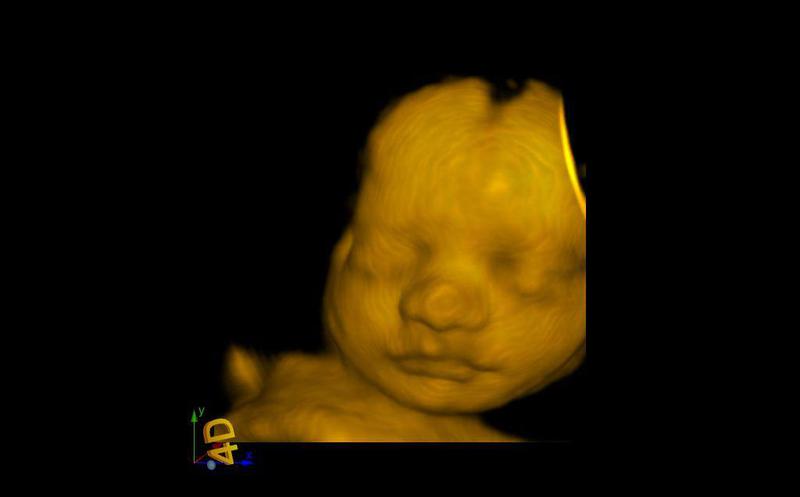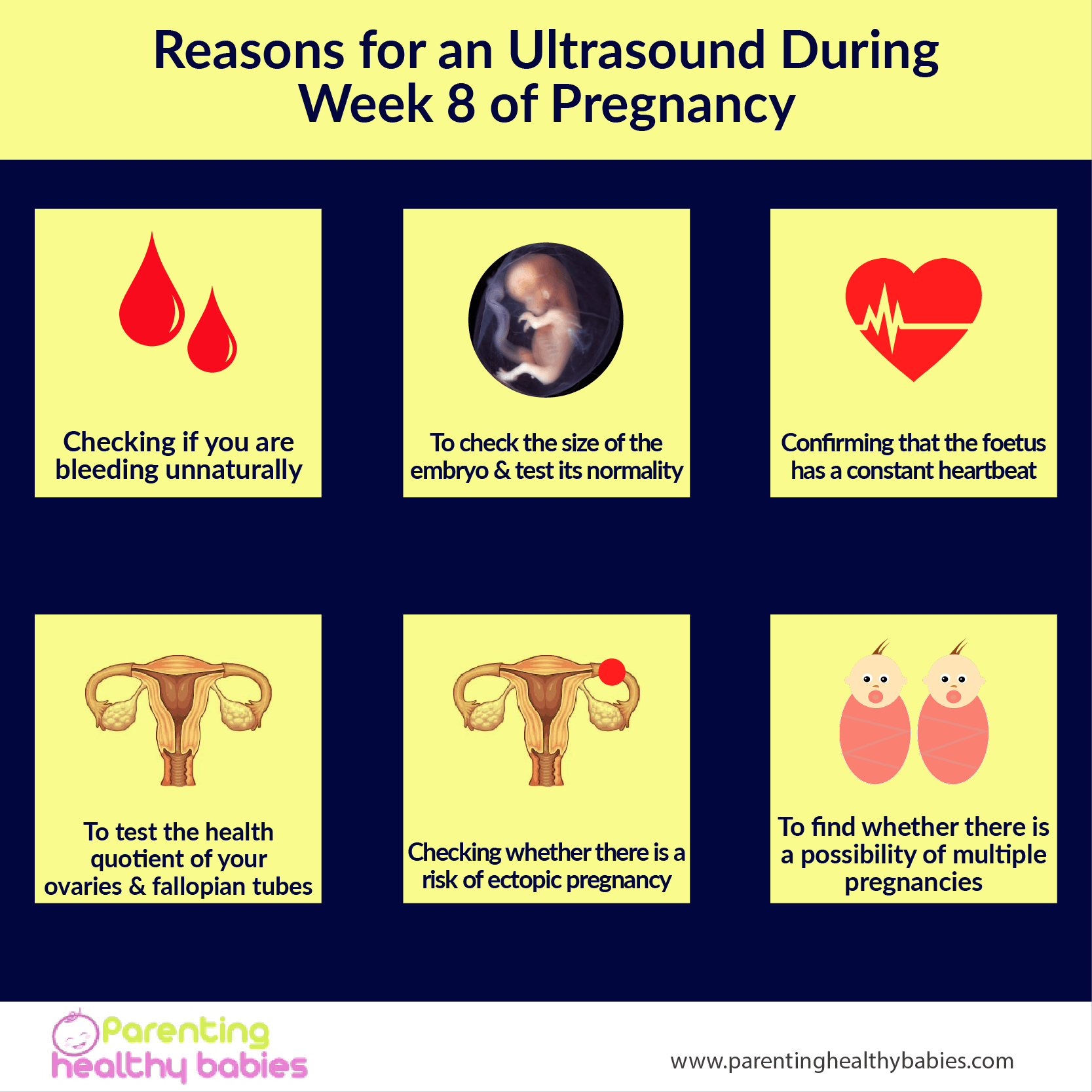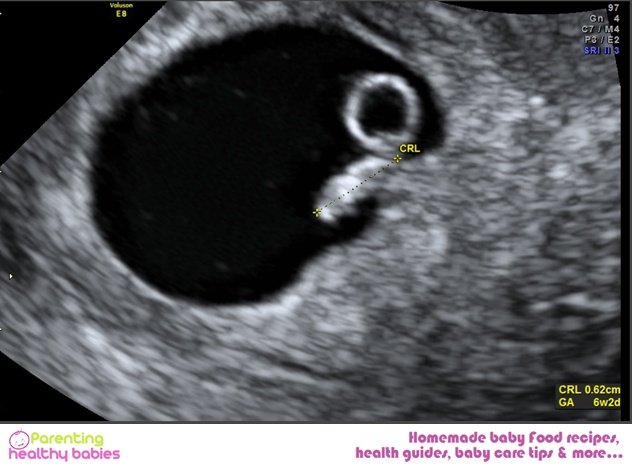At 10 weeks, you are finally looking officially pregnant with that baby bump quite visible to the eyes of others around you! In the 10 week ultrasound, you can see the size of your foetus which is now that of a strawberry that is about 1.2 inches long and approximately 0.14 ounces heavy. You are in your second month of pregnancy. At this stage, the baby is growing even more rapidly! In the next one month, the growth rate of the foetus will become double the present rate! You have to become more cautious as the days pass by.
Read More: Week 10 of Pregnancy – Pregnancy Week by Week
Reasons for a 10 week ultrasound
- To check the baby’s growth rate
- To trace signs of abnormality
- Check your risk level while pregnant
- To check whether the baby is at a potential risk of gestational diabetes, heart complications, and uneven physical developments
Your 10 weeks ultrasound
At 10 weeks you are likely to have an abdominal test to track the development of the foetus. The ultrasound this week will provide a clearer picture of your baby on the 3D 4D screens.
10 week 3D Ultrasound
As the baby is developing quite rapidly, you will see on the screen that its bones and cartilages are forming and the joints are becoming more functional. The baby is already throwing its arms and legs in the air, or let’s says in the space inside your womb! The kicks have already begun and the doctor will ask you to keep a track of the feels in order to understand the level of activeness of your baby. The baby’s nails and hair are also beginning to appear. Be ready for some slight scratches if the foetus is hyperactive at some point!
10 week 4D Ultrasound
On the 4D screen you can see the foetus reacting to your voice and the ultrasound! You will also see that your baby is now swallowing food. Hence, your doctor will probably prepare a diet chart for you to follow from this week for the next few weeks. The ears and tiny eyelids have formed, but the eyes still need more development in their distinctive internal features. But the baby is gradually beginning to be able to hear whatever sound occurs around you!
What to expect during Your 10 Week Ultrasound?
The doctor performs a “First Trimester Screen” in which your blood is drawn for testing pregnancy risks, risk of present or even future gestational diabetes, and highly possible contagious infections. As a part of this test, there is also a “Nuchal Translucency Screening, NT Scan, which is done to test the foetus’ risk of Down syndrome and chromosomal abnormalities.
During this ultrasound, there is another cell-free foetal DNA screening called “Non-invasive Prenatal Test” (NIPT) that involves testing your blood for signs of chromosomal abnormalities, Edward syndrome, Patau syndrome, and Down syndrome.
This week, you can opt for genetic testing, which involves examining the baby’s genetic history and related risk factors. If your doctor feels detects chances of complications in your pregnancy, a Chorionic Villus Sampling (CVS) might be recommended for diagnosing further chances of abnormalities in the foetus. In this process, an ultrasound is used to determine the location of the placenta. Either a speculum is inserted into your cervix or a medical needle is inserted through the belly for collecting some cells from your placenta, used for genetic testing.
Ones your 10 week ultrasound is over, ask for pictures if you want to relive these moments of seeing your child wobbling around inside the womb and making funny sounds!
If you are pregnant with twins during your 10 week ultrasound, the doctor will examine you in the same manner, but some tests might become slightly cumbersome due to the presence of two foetuses that require equal attention and testing for genetic history and abnormalities. You will also receive a separate diet chart if you are carrying twins with complications or defects.
Ultrasound is almost always the toughest part of every week. Passing the tests is like crossing a hurdle! Once you are done with this stage of ultrasound tests, you should be ready to focus on the positives of this beautiful journey.
Development of your baby at its 10th week
By the tenth week of pregnancy, your baby completes the most critical part of his development. As this is just the beginning of the fetal period, during this time the tissues and organs in the baby’s body begins to grow and develop at a rapid rate. For instance, the vital organs of his body like the kidneys, intestines, liver and brain have started to function. However, all these organs will continue to develop throughout the pregnancy. Not only this, but one can also notice the formation of nails on his fingers and toes and also, the growth of peach-fuzz hair on his skin.
Apart from this, some other developments like the baby’s limbs, hands, spine have also begun to take place by this time.
- His feet have grown long enough to be met in front of his body.
- His hands which are flexed at the wrist can meet over his heart.
- The outline of the spine can be clearly seen through his skin.
- The spinal nerves have also begun to stretch out from his spinal cord.
- The baby’s limbs are now able to bend.
- His forehead bulges with his (developing) brain.
10 weeks pregnancy symptoms
Listed below are some of the most common 10 weeks pregnancy symptoms
Round ligament pain: pain and aches in the abdomen are quite common during the 10th week of pregnancy. Not all women may feel the abdominal pain or may not even be able to notice it but others may find these sensations a lot painful. Although, if you are a mom-to-be of twins, this may be more noticeable to you.
Fatigue: this may be pretty common because of your body that is working really hard for the growth and development of the baby and may also because of the discrepancies in your sleep patterns.
Visibility of veins: well, this happens on a purpose and mainly because of the extra blood that these veins are carrying to your little one.
Vaginal discharge: increase in the vaginal discharge along with an increase in the estrogen production can lead to a clear and odourless discharge, called as leukorrhea that helps to get rid of the bacteria.
Morning sickness: until you reach your second trimester, nausea and vomiting will be pretty common to your routine.
Mood swings: hormonal balance is something that is to be blamed here.
Growth of breasts: your breasts have been preparing for breastfeeding for weeks, which is why you have observed a growth in your breasts.
10 weeks pregnant belly
Now, this is the time when your pregnant belly might just begin to show up. No, I don’t mean that everyone you meet will consequently know of your pregnancy, but I surely mean that you have to add some stretchy, comfortable and loose-fitting waistbands and tops in your wardrobe. As your baby is growing rapidly during the 10th week, so your belly has started to take that curvy shape as well.
In addition to this, gaining weight during the first trimester is something that a lot of woman question. Well for pregnant women of average BMI, gaining about three to five pounds is something many doctors recommend. On the other side, if you’re a mom-to-be of twins, you should have gained about 10 pounds by the 10thweek, that means gaining a pound per week.
10th week pregnancy risks
A woman is at a high risk of miscarriage during the first trimester. In fact, she can have a miscarriage even in the first two weeks, when she may not even know that she’s pregnant. There can be a number of factors that may lead to miscarriage. Some of these are listed below:
Infections: uterus and cervix infections can prove to be detrimental to a developing baby. Chlamydia, mycoplasma, ureaplasma and gonorrhoea are some among these.
Clotting disorders: in this condition, your body forms more blood clots than normal. For instance, lupus anticoagulant and antiphospholipid syndrome. These blood clots are formed in the placenta during pregnancy which prevents the supply of nutrition and oxygen to the baby.
Anatomic problems: this basically refers to the defects of the uterus cavity which means that if a woman’s uterus was not formed correctly in the developing years, she may not be able to support a healthy pregnancy.
Progesterone deficiency: progesterone is a hormone that plays a vital part in the pregnancy but in this condition, the body is unable to produce enough progesterone.
There are reportedly 80 percent miscarriages taking place in the first trimester. However, age too has a crucial role to play in a woman’s risk factor. Let’s consider these:
- Women between 20 to 30: 9-17%
- Women between 35 to 39: 20%
- Women between 40 to 44: 40%
- Women between 45 and older: 80%
Hope this article was of help to you! Please share your comments/queries/tips with us and help us create a world full of Happy, Healthy and Empowered Women!!

